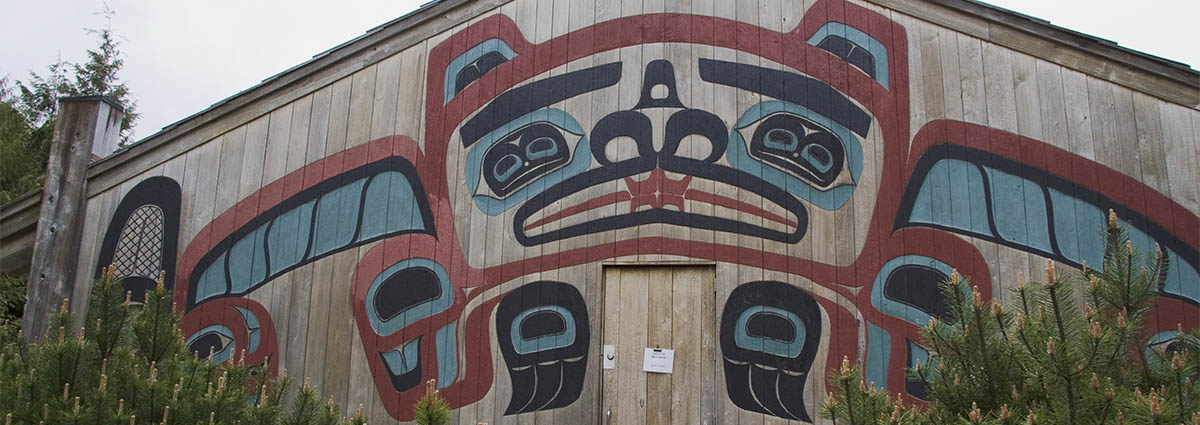Alaska’s First City and the Salmon Capital of the World, Ketchikan is the furthest southeastern city in the state. It’s usually the first Alaskan city visited by cruise ships and others traveling north. It’s here in a Tlingit settlement called Saxman Village that Joe Williams Jr, a Native Tlingit, was born.

Once the Mayor of Ketchikan and Saxman, Joe has been involved with the communities and Native tribes for most of his life. He is the first Tlingit to be elected Ketchikan’s mayor. He served as Saxman’s tribal president for 12 years and also served on the Alaska Inter-Tribal Council and National Congress of American Indians. During his career, he has brought people and organizations together to forge agreements for the betterment of communities and helped raise money to invest in the Native communities and their people.
It’s safe to say Joe is an expert on the local community, its politics, tribes and people.

Joe has owned his tour company, Where the Eagle Walks, for 29 years. He offers historical walking tours through Ketchikan and lectures on cruise ships and other venues. Storytelling about life as a Tlingit is his specialty.
Meet Joe on board Windstar’s yacht in Ketchikan and hear him tell stories about Native Tlingit traditions and their way of life yesterday and today. An engaging storyteller, Joe recounts his childhood growing up in Alaska and the Native traditions they followed. From aunties and uncles taking charge of child rearing to fishing and traditional Tlingit cuisine, Joe weaves together stories to depict life for Natives in Southeast Alaska.

Saxman was settled by Tlingits from the old villages of Cape Fox and Tongass in 1894 and established as a 2nd class city within the territory of Alaska in 1929. It is now home to the most standing totems in one location. In Saxman’s Totem Park, you’ll find 25 totems – all authentic replicas of poles abandoned in Native villages as people moved to towns and cities.

Three main tribes have occupied lands in Southeast Alaska – Tlinglit, Haida and Tsimshian. Homes were built from red cedar, spruce, and hemlock with a center fire pit and smoke hole. Houses usually held 20-50 people from a clan. The Tongass Forest held massive trees and the people used wood for many things – canoes for transportation, housing, cooking boxes and utensils, totem poles, tools and clothes.
They were fishermen who used canoes to hunt at sea – halibut, salmon, clams, crab, cod, and herring. Fish traps and weirs were also used on rivers. They knew how to preserve food by smoking and drying it out for use during the winter. Herring was traditionally submerged in seal oil to preserve for later use. Hooligan were most prized for their oil and were usually boiled and mashed with the oil skimmed off the surface to be stored in bentwood boxes. Salmon was by far their largest food source. They also ate berries, herring eggs, salmon roe, gum boots, deer and seaweed.

The social organization of society was very important with high-ranking families, commoners and slaves. In the matrilineal society, children inherit their lineage through their mother such as land rights, clan crests and more. In the Tlingit tribe, you were either the Raven or the Eagle moiety. Clans fell underneath. The Haida have two moieties, Eagle and Raven. The Tsimshian had phratries (tribes or totems) and you belonged to one of four– Frog or Raven, Wolf, Eagle, and Killer Whale or Fireweed. Societal organization was extremely important because there was no central government. Decisions were made by the clan, house or village.
Family dynamics in the tribes may differ from how you were raised in your family. Joe will explain why sons were raised by their uncles and daughters by their aunties. Arranged marriages were the way of the world and divorces almost never happened. For more intriguing details about their culture, make sure you’re on board for Joe’s talk. Don’t miss it.
If you have a chance to take his tour and walk around the streets of Ketchikan (Joe Williams City Walk & Narration), take the opportunity to see his city from his viewpoint. You’ll learn much about the city’s history and the culture of the Native Alaskans who live there.
Ketchikan is a port call on Windstar’s Alaska cruises aboard Star Breeze, a small all-suite yacht carrying only 312 guests. Seven different cruise and cruise tour itineraries range from a week to 15-days and depart from the homeports of Vancouver, B.C.; Seward and Fairbanks, Alaska. See all the Alaska voyages here.



















































